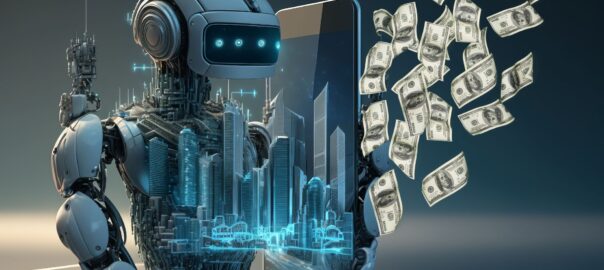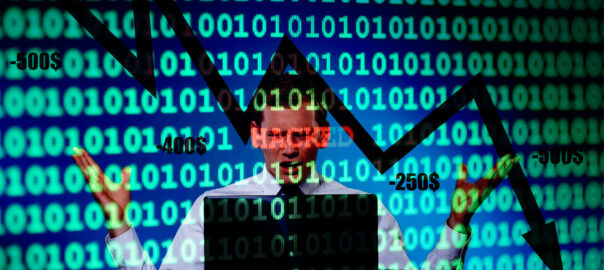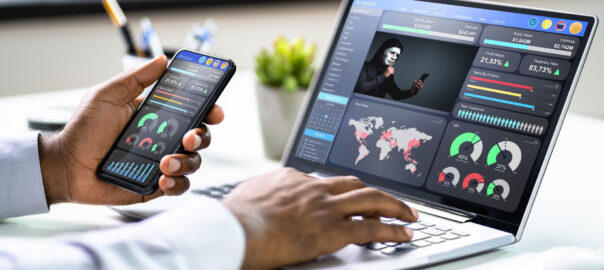Artificial intelligence is an incredible kind of technology that simulates human intelligence. Through machine learning, AI acquires information that enables them to perform actions that are traditionally only done by humans. This kind of technology brings vast benefits to just about everyone. But at the same time, it also presents security risks, especially to organizations and businesses. This is because a hacker can use AI and use it to wreak havoc!
It’s quite ironic that the same technology is used to benefit and harm businesses. It is this very nature of AI that makes it confusing as to whether it is good or bad. In this article, we will discuss the differences between AI for hacking and AI for security and ultimately learn how to leverage it to protect your business.
How Hacker AI Works
For hackers, the birth of AI technology has opened a mother lode of cunning tools that are used to make their attacks more efficient. It will take several pages to discuss the many ways they are using AI to facilitate security breaches and so on. For now, let’s list some of the more common techniques these cybercriminals use to give you an idea of how hacker AI works.
Hacker AI Automated Creation of Malware Code
Traditionally, creating malware falls into the hands of highly skilled coders. But today, thanks to AI, practically anyone can generate code for malware. Just tell the machine what you want the program to do, and they will “write” code for it almost instantly. Furthermore, this AI-generated malware is quite stealthy and can efficiently dodge even the tightest security systems.
Advanced Phishing Campaigns
AI-powered chatbots are highly versatile tools, but unfortunately, one of their most frequent uses is for the generation of realistic phishing emails. These emails have a higher level of credibility because each recipient receives a customized message thanks to AI algorithms’ data collection and analysis.
Getting Past Biometric Security Systems Using Hacker AI
Biometric systems’ security is no longer as reliable as it once was because AI can now mimic human intelligence, behavior, and even appearance. AI can duplicate fingerprints and even voiceprints, making it easy for a hacker to gain access to most biometric systems.
How Security AI Works
Now, it might seem that hackers might have the upper hand in using AI, but that is not necessarily true. The use of AI also strengthens many security solutions currently in use. The same technology that is helping hackers has also proven to be invaluable in many of today’s cybersecurity systems. Here are some of the top ways in which security AI works compared to hacker AI.
Early Threat Detection
Through machine learning, security systems can be trained to detect and respond to threats faster and more efficiently. By analyzing past trends, patterns, and other data, AI algorithms can predict when a threat is about to materialize, even when there are no apparent signs yet.
Immediate Incident Response
AI systems perform non-stop surveillance of your systems and networks. If anything is amiss, the system cannot detect when something is wrong but will launch the appropriate response in real-time, eliminating any security problem before it even arises.
Minimized Human Error
Even the most highly trained or most competent employee can make mistakes, whereas a thoroughly trained AI system can produce perfect or near-perfect results. AI can accurately identify risks and red flags, leaving no chance for threats to go unnoticed.
Security Task Automation
Free up your staff’s time by letting AI handle routine security tasks like network monitoring and data analysis, while they focus on more complex or pressing matters. In this way, AI becomes a vital tool not only for enhanced security but for better work management as well.
Final Thoughts on Hacker AI and Security AI
As a business owner, you have to deal with both the good side and the bad side of AI. Consider using AI technology to stay competitive and improve security in your business. Protect your business from AI-powered attacks.
Now, we understand that this can be very frustrating because, naturally, your primary focus should be on your business. That is why we are prepared to take over everything that has to do with security. Our AI security system ensures complete protection by detecting and monitoring threats.
For more information on this subject, you will discover plenty of useful information in our downloadable Cyber security E-book. Let us know if you are ready to take that step because we are ready whenever you are.



